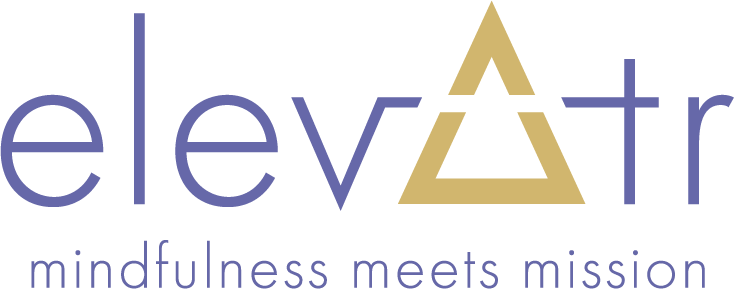In just a few weeks, we’ll step into Q4 of this year. For many, it’s a time of goal setting for your organizations, of crafting plans and budgets for 2025. And if we’re smart, it’s also a time to think about how our well-being goals fit into the mix.
Ironically, the latter can feel much more daunting, which makes them easier to avoid. Setting well-being goals can rise like a mountain in front of us—one that’s so intimidating, we don’t even know where to start. But we can make it simpler by breaking it down into two key steps: one compelling desire + one effective goal.

One Compelling Desire
Shame is not a long-term goal-setting strategy. Desire is.
Shame is unkind and pushes you into a goal like a “should,” whereas desire pulls you in because it feels right—especially when the goal is rooted in your core values and aligned with the identity of the person you want to be.
You can uncover your desires by reflecting on these questions related to your physical, emotional, mental, and spiritual well-being. Use your answers to these questions to identify one well-being area or goal on which to focus.
- In which area of well-being is my energy and satisfaction lowest?
- What really stands out to me as an area I WANT to change?
- Improving in which area will make the biggest difference in my well-being and the way I feel about myself?
- What is one thing I need right now to take care of my well-being?
One Effective Goal
Most people stop there—I have an idea or a goal, so let’s get on with it. But that can be a critical mistake.
The way we set our goals is just important. In fact, it can make or break our ability to achieve them. Here are five ways to set goals that make them motivating, doable, and sustainable.
To promote clarity, set SMART goals. SMART is an acronym for Specific, Measurable, Action-Oriented, Realistic and Time-Bound. There are few things more frustrating than an unclear goal. How will you know what’s really expected or if you succeed if haven’t set a clear expectation? The SMART formula creates clarity and a certain level of motivation and accountability.
- To put this framework into action, you can change a statement like, “I want to exercise more,” to a SMART goal like, “I want to walk for 15 minutes three days a week.”
To promote consistency, build small habits. Think to yourself—what is the minimally acceptable target I can create around this goal to keep me moving forward? You may have heard of James Clear, who is the author of Atomic Habits. He says for the best results, you should build small habits that you will be able to achieve even on your worst days. Those little things will lead to the big things because you can sustain them.
- To put this framework into action, you can change a statement like, “I am going to eliminate sugar from my diet,” to a small habit like, “I will skip dessert one day per week.”
To promote perspective, set a rule or boundary. Shane Parrish, an author and founder of Farnam Street who studies mental models, says, “Everyone loses the battle with willpower at some point—the only question is when.” He suggests instead to create clear rules or boundaries that align with your goals.
- To put this framework into action, you can change a statement like, “I want to get better sleep,” to a rule like, “I will not check email within an hour of going to bed.”
To promote prioritization, use the power of subtraction. Think about the difference between a painter and a sculptor. The painter adds color, texture, and strokes to her work, where a sculptor chips things away to create a masterpiece. When you think like a sculptor, you are more easily able to prioritize and focus on the things that are truly important. Instead of adding more to your to-do list, you are taking something away to create more of what you want.
- To put this framework into action, you can change a statement like, “I need to find time to read the books for book club,” to a subtraction like, “I am going to stop going to book club because I cannot actively participate.”
To promote positivity, make your goals meaningful. New research on New Year’s resolutions found the best success with “approach goals” versus “avoidance goals.” Approach goals are the things we want to achieve, while avoidance goals are the things we want to avoid.
- To put this framework into action, you can change a statement like, “I want to stop hanging around with people who drain my energy,” to an approach goal like, “I want surround myself with people who lift me up.”
Let’s Get Started
Gone are the days of all-or-nothing thinking. That’s what gets us into trouble in the first place. As you plan for next year, be sure to consider your own personal well-being. Pick ONE compelling desire + ONE effective goal to start you on your way.
When you climb the mountain of well-being one step at a time, you’ll build the foundation for your long-term success and set an example for those around you. We could all use more of that in 2025.
If you need support with your 2025 planning and goal-setting, contact me to set up a strategy session for you or your team.
